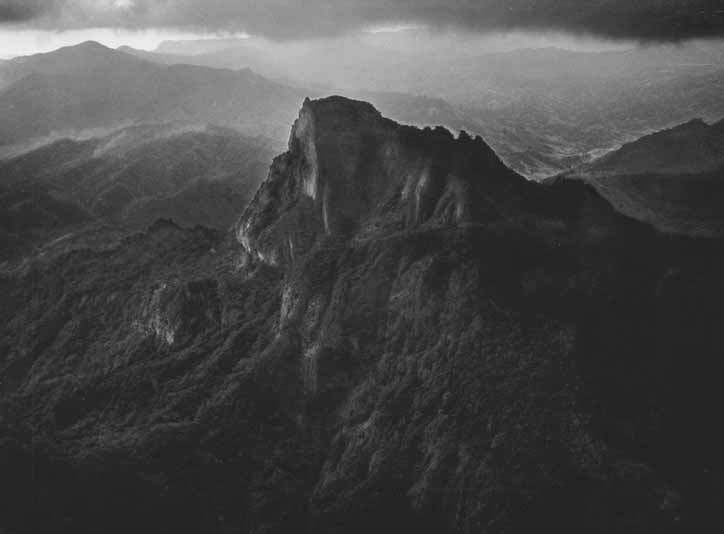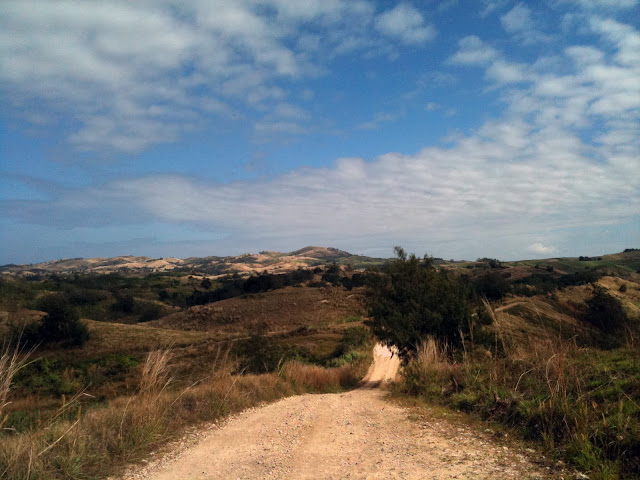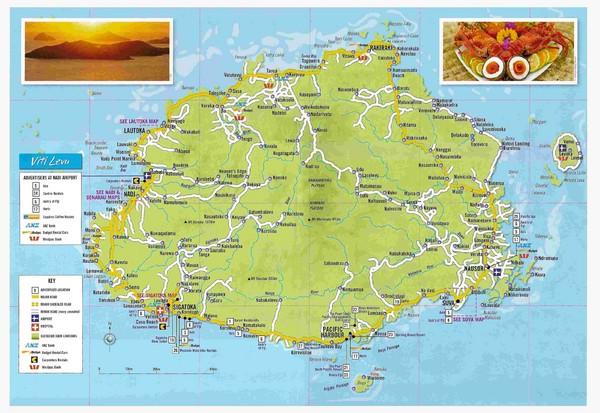 |
| Image depicting the locations of the Pacific and Australian plates to the Fiji plate. The plate boundaries are still hard to explain, but it was, at a time, subducting from both sides. |
 |
| Mt. Victoria which is now an inactive volcano was what created the island with its eruptions adding lava to the surface of the earth. |
 |
| Windward side of Fiji with lush tropical jungles. |
 |
| Leeward side of Fiji with much dryer conditions. |
These earthquakes, which also occur often, can have a few varying effects on the island. The island can be physically distorted from the actual movement of rocks, but something greater probably would occur. Being on active plate boundaries the risk of earthquakes reawakening dormant volcanoes is always there. If a volcano erupted the landscape would be greatly changed. The volcanoes are mostly andesite and would probably be explosive. This would cause ash and hot pyroclastic flows to burn the landscape killing vegetation.
Example of a pyroclastic flow occurring at the Unzen Volcano.
Another potential result from an earthquake would be a tsunami occurring afterwords. Tsunamis happen along subducting plates from tension building up and then releasing creating a massive surge of water. With a tsunami the island could have a completely new makeover. Most of Viti Levu's cities are on the coast and a large tsunami would cause massive destruction along the coasts. This would rewrite what many of the low laying areas look like causing large amounts of change from the surge of water.
 |
| Map of the rivers of Viti Levu which will eventually erode the land around them down until they have taken all of the land down to the ocean flattening the island in thousands of years. |
Sources:
Youtube
Youtube
http://www.justpacific.com/fiji/fijiphotos/wrightpics/scenery/nabui.jpg
http://www.fiji.pictures-pacific.com/travel/pictures/03-viti-levu.jpg
http://whatonearth.olehnielsen.dk/plates/fiji.asp
http://en.wikipedia.org/wiki/Category:Rivers_of_Viti_Levu
http://joetourist.ca/fiji/graphics/VitiLevuMap.png
http://joetourist.ca/fiji/graphics/VitiLevuMap.png
No comments:
Post a Comment